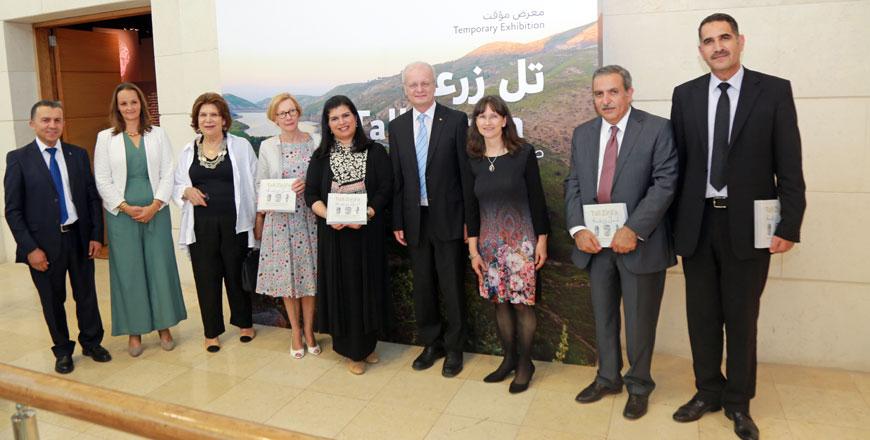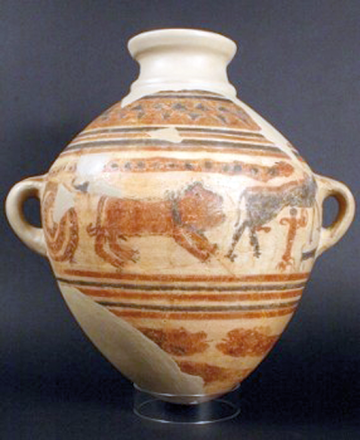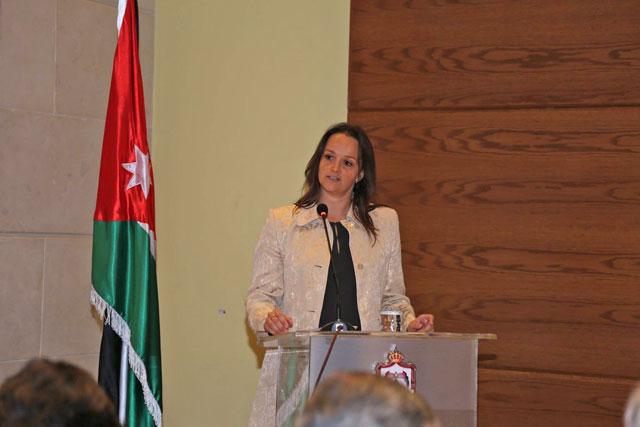You are here
German archaeologists support UNESCO in sustainable project in Wadi Al Arab
By JT - Jan 16,2022 - Last updated at Jan 16,2022
AMMAN — Women and men wearing safety vests and facemasks, secured by ropes while working on a prehistoric tell in North Jordan: This exceptional scenery is currently presented to visitors of Tall Zira’a in the valley of Wadi Al Arab close to the border between Jordan, Israel and Syria and south of the Lake Tiberias.
Since 2001, the German Protestant Institute for Archaeology (GPIA, German DEIAHL) has carried out extensive excavations at the site.
Currently, a major socioarchaeological experiment is conducted here under the patronage of UNESCO and the International Labour Organisation (ILO), in cooperation with the Jordan Department of Antiquities (DoA), according to a statement from the German embassy.
A total of 240 Syrian refugees and Jordanians, both men and women, are working to secure the cultural and economical potential of two important monument sites: Tall Zira’a and the ancient city of Gadara, known today as Umm Qais.
This project is funded by the European Union (via the Madad fund as a response to the Syrian crisis) as part of a design to facilitate livelihoods and employment in Mafraq, Irbid and Ajloun. Through this, Northern Jordan’s cultural heritage will be developed and enhanced, the statement said.
Concept, realisation and on-site supervision are the responsibility of two German specialists: Katharina Schmidt, archaeologist for the ancient near east (GPIA, German DEIAHL), and Frank Andraschko, a specialist for regional developments based on characteristics of cultured landscapes.
Tall Zira’a is a more than 5,000 years old settlement mound and is highly endangered. Like many other archaeological sites, it is subject to increasing destruction and erosion due to the heavy rainfall caused by climate change. Due to this, the vertical edges of the tell are now bevelled to minimise the dangers of collapse and erosion and provide long-term protection for the monument.
The project is active in cooperation with the German-Jordanian University, as part of an intensive employment measure. It guarantees both the close archaeological supervision for the removal of sediments and layers as well as the creation of new infrastructures for ecotourism on the adjacent “Jordan Trail”.
“It is the first time throughout the world that an archaeological settlement hill is treated this way,” the statement said.
The measures undertaken in the ancient city of Gadara, located 300m above the valley, pursue a similar goal.
The biblical city of Gadara is one of the most important archaeological sites in Jordan today. Time takes its toll on this cultural heritage site as does exposure to tourism. For instance, plants have spread in the cracks of the ancient Roman road, which has been preserved in its original state over the length of one kilometre. The pressure generated by their roots slowly destroys the structure of the pavement and thus the ancient street itself. To prevent this, the joints are now cleaned manually and then grouted anew with mortar specifically designed to fit the characteristics of this monument.
Another essential activity within the intensive employment measure is the construction of pathways on the site, whose territory measures 1.5 square kilometres in total. These pathways are created without machines in order to preserve archaeological layers and nature.
At the same time, traditional handicrafts such as drywall building are part of the immaterial cultural heritage that is sustained and promoted. These interventions create new hiking paths and resting places for visitors as well as drainage systems to protect the site from large amounts of rainwater in winter.
Next to the preservation and conservation of the ancient sites Schmidt and Andraschko stated their motive: “We are on site to see if everything is going well, to learn what we can do better and to develop ideas to transfer this concept to other excavation sites. One of our main interests is the connection between history and present with a focus on the future. We want to inspire people’s enthusiasm for their cultural identity and their cultural heritage.”
The project is scheduled to end in January of 2022.
Related Articles
AMMAN — Marking the 20th anniversary of His Majesty King Abdullah’s Accession to the Throne, an exhibition titled "Tall Zira’a — Mirror of J
AMMAN — A number of objects have been excavated from Tell Zira’a (located around five kilometres southwest of ancient Gadara) by the German
AMMAN — Two German books — “Das Geheimnis des Tells” (Secrets of the Tell) and “Tell Ziraa: The Gadara region Project (2001-2011)” — were la














